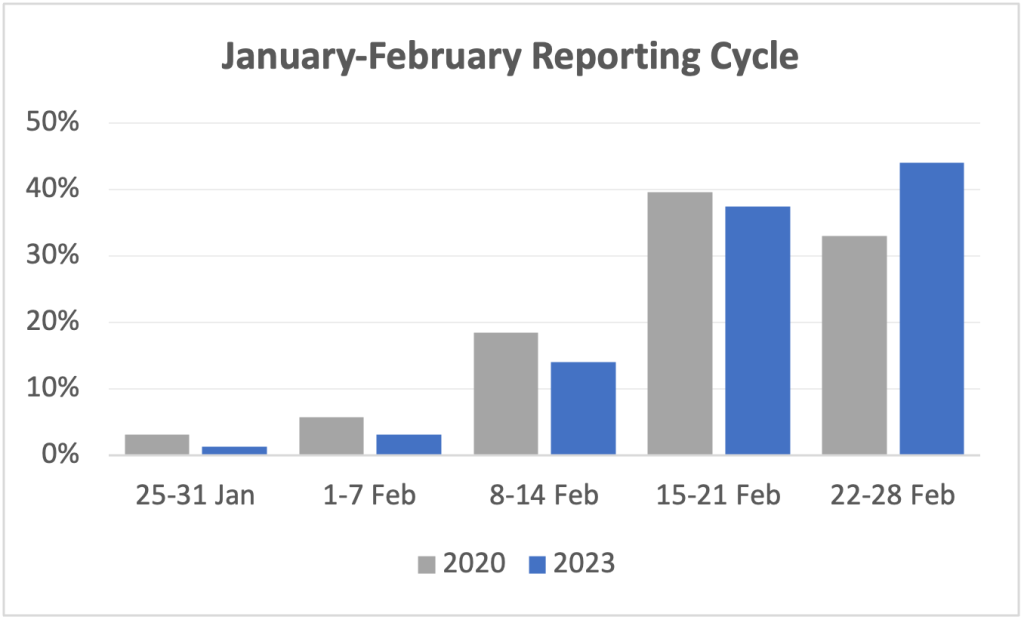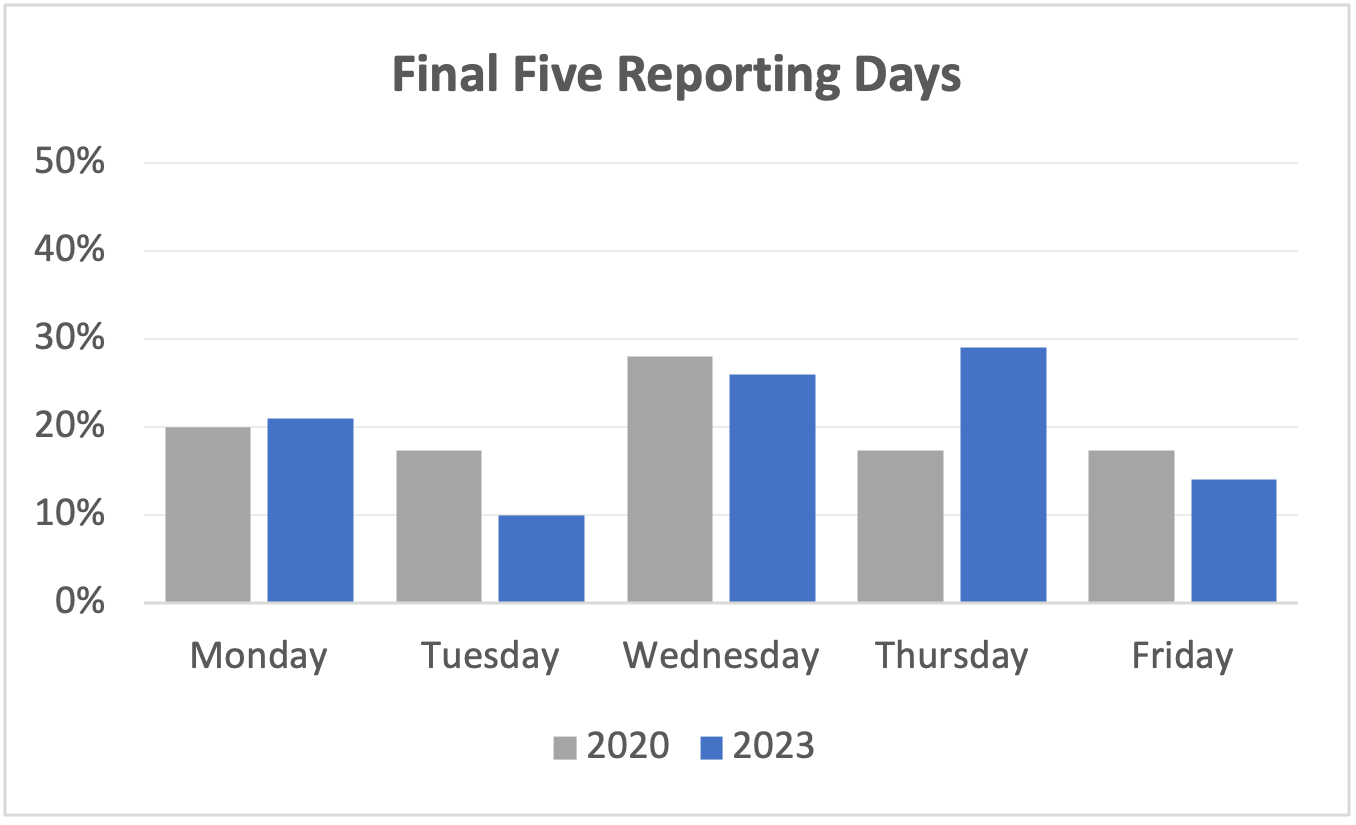ADITYAN ANIL, Shareholder Analytics
A key event in any company’s IR Calendar is the reporting of their financial results. This occurs twice a year and requires all ASX listed companies to publish financial results that cover a six- and twelve-month timeframe. The ASX Listing Rules give companies discretion on when they choose to publish their results, but strictly requires them to do so within two months of the end of a reporting period. In Australia the two main reporting periods take place in August and February.
The COVID Effect
It’s always good policy to ensure that shareholders are kept informed on a timely basis and for any reporting lag to be minimised. Notwithstanding this, the reporting of financial results is a resource intensive process. During COVID-19, significant logistical challenges were also created around the annual reporting processes, which we reported on in our Same-Day Reporting in 2021 blog.
During the February reporting season we undertook a review of when ASX listed companies published their financial results in order to see if there have been any noticeable changes since February 2020, the final pre-COVID reporting period. Our review focused on the cohort of companies in the S&P/ASX300 that report their half or full year financial results in the February reporting cycle.
More companies reporting in the second half of February compared to pre-Covid
In the January/February 2023 reporting period we found there was a noticeable shift towards companies releasing their results in the last week of the cycle compared to the same pre-COVID reporting cycle in 2020.
In 2023, two thirds fewer companies reported in late January compared to 2020. This pattern was repeated in the first three weeks of February with 50% fewer companies reporting in the first week, 26% less in the second week and around 7% less in the third week.
However, in the final week of the February 2023, 44% of companies published their results compared to 30% in 2020.
Has the favourite day of the week changed?
Taking a closer look at the final five days in the 2023 February reporting cycle compared to the same period in 2020 the busiest reporting days remain mid-week. In 2020, Wednesday was the busiest day, with 28% of companies choosing to publish results then, while in 2023 it was Thursday (29%).
Interestingly there has been a noticeable shift in reporting patterns pre and post Covid. In 2020, apart from the peak day on Wednesday, reporting was reasonably evenly distributed across the remaining days of the week with a slight bias to Monday. This year however 55% of companies reported on Wednesday and Thursday. Monday’s popularity remained relatively unchanged (21%) compared to 2020 while Friday (14%) and Tuesday (10%) both fell with the latter most likely linked to it being the final reporting day of the cycle.
The surprising finding from this analysis is that Tuesday is the least favoured reporting day. In 2023 we can ascribe that to it being the last reporting day of the cycle so it would appear that most ASX300 companies make an effort to ensure that they have reported before then. Nevertheless, in 2020 Tuesday was on a par with Friday, the other unpopular reporting day.
Our takeout from this, therefore, is that those companies that are looking to report on a less busy day during the week should, perhaps, consider Tuesday.
Conclusion
Overall, we can see that there has been a drift in ASX300 companies reporting in the second half of the month with 81% reporting during this period in 2023 compared to 73% pre-Covid. This year both Wednesday and Thursday were the popular days to report in the last week with Tuesday and Friday providing opportunities for companies to get their message out if they are looking for days that are less congested. It will be interesting to see if this pattern continues in future reporting seasons, or if we revert to a more evenly distributed reporting pattern during that peak week of the reporting cycle.

